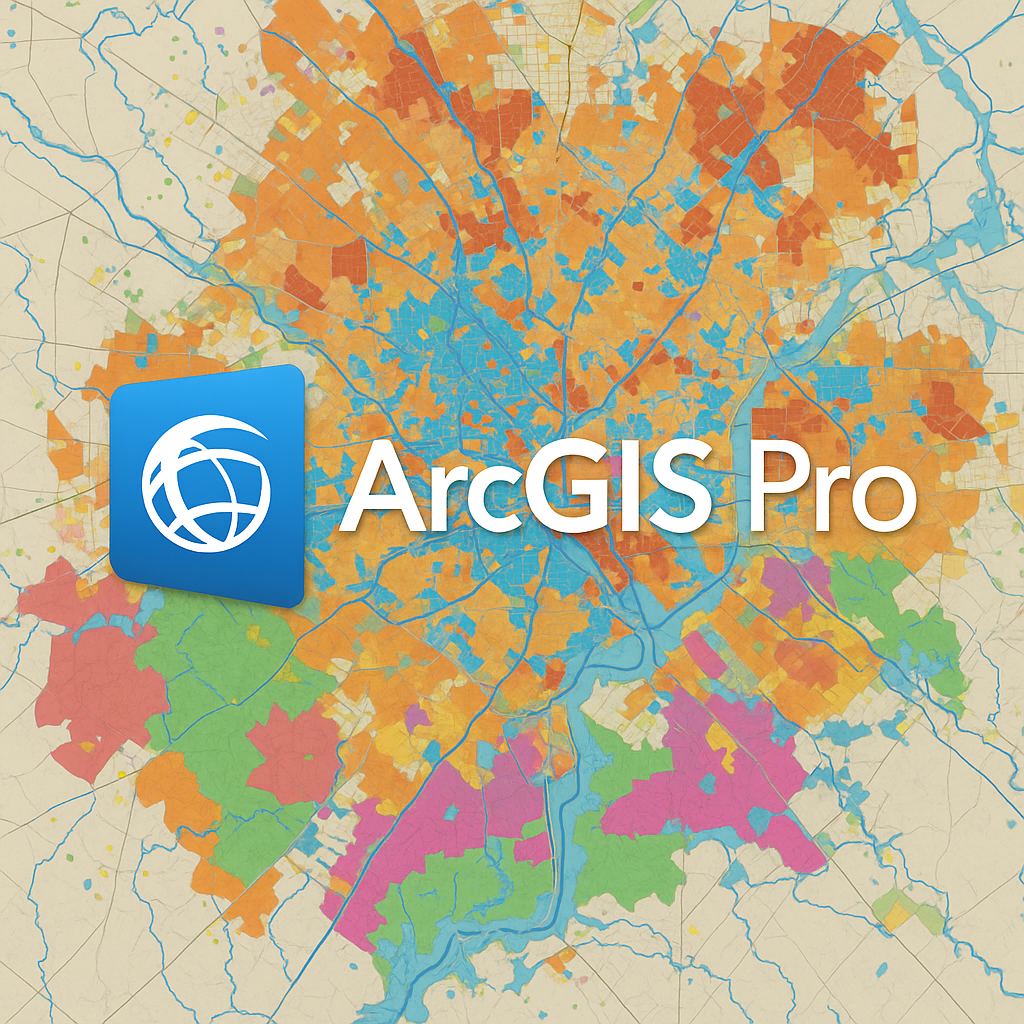While these five data management tips can significantly improve your workflow, mastering ArcGIS Pro requires comprehensive training across all its capabilities. Our ArcGIS Pro Class Bundle provides everything you need to become proficient in the software!
Whether you’re a seasoned GIS professional or transitioning from ArcMap, ArcGIS Pro offers powerful features that can dramatically streamline your workflow. After working with countless datasets and projects, I’ve discovered that many users overlook some of the most efficient data management capabilities built right into the software. Here are five underutilized features that will save you hours of work.
1. Master the Catalog View for Bulk Operations
While most users interact with the Catalog Pane, the full Catalog View is a powerhouse for data management. Access it through View > Catalog View, and you’ll unlock capabilities that the pane simply doesn’t offer. Learn more about using Catalog Views.
The Catalog View allows you to perform bulk operations that would otherwise require repetitive clicking. You can select multiple feature classes across different geodatabases and copy, move, or delete them in one action. Even better, you can view and edit metadata for multiple items simultaneously. This becomes invaluable when you need to update contact information or access constraints across dozens of datasets.
Pro tip: Use the Details Panel in Catalog View to quickly preview data without adding it to your map. This saves memory and time when you’re searching through large databases for the right dataset.
2. Leverage Attribute Rules for Data Integrity
Attribute rules in ArcGIS Pro go far beyond simple domain constraints. These powerful validation tools can automatically calculate values, restrict edits based on complex conditions, and even trigger actions when data changes. Read the comprehensive guide to attribute rules.
Instead of manually calculating area or length fields after each edit, create calculation rules that update automatically. For example, you can set up a rule that automatically populates a “LastModified” field with the current date whenever a feature is edited, or calculates the area in multiple units simultaneously.
The real power comes from constraint rules. You can prevent overlapping polygons in a parcel layer, ensure that pipe diameters increase downstream in a utility network, or enforce that building footprints don’t exceed zoning height restrictions. These rules catch errors at the point of entry, eliminating hours of quality control work later.
3. Use Data Engineering Tools for ETL Workflows
The Data Engineering tools in ArcGIS Pro are often overlooked but incredibly powerful for Extract, Transform, and Load (ETL) operations. Instead of manually processing data through multiple geoprocessing tools, you can create sophisticated data pipelines that run with a single click. Explore the Data Engineering capabilities.
Note: For more advanced ETL workflows, the Data Interoperability extension provides additional capabilities using FME technology.
The key tool here is the Create Data Loading Workspace, which generates a framework for moving data between schemas. But the real efficiency comes from combining this with Model Builder or Python notebooks. You can create repeatable workflows that handle projection transformations, field mapping, and data validation all in one process. Explore the Data Engineering capabilities.
For recurring data updates, set up a data engineering workflow that reads from your source (whether it’s Excel, CSV, or another database), performs all necessary transformations, and loads into your geodatabase with proper domains and subtypes applied. What once took hours of manual processing becomes a five-minute automated task.
4. Optimize Performance with Display Filters and Scale Ranges
Nothing slows down analysis like working with massive datasets that render every single feature at every scale. Display filters and scale-dependent rendering are your secret weapons for maintaining performance without sacrificing data integrity. Master display filters and scale-based visibility to dramatically improve your workflow.
Display filters differ from definition queries because they only affect visualization, not analysis. You can filter out 90% of your features for display purposes while still running analyses on the complete dataset. This is particularly useful when working with point datasets containing millions of features, like GPS tracks or sensor readings. Master display filters to improve performance.
Combine display filters with scale-dependent rendering for maximum efficiency. Set detailed features to only appear when zoomed in beyond 1:10,000, while showing generalized versions at smaller scales. Your maps will draw faster, and you’ll spend less time waiting for refreshes during analysis. Learn about scale-based visibility.
5. Harness the Power of Contingent Values
Contingent values are perhaps the most underutilized feature for maintaining data integrity in related fields. They create smart dropdown lists that change based on previous selections, similar to cascading dropdowns in web forms. Learn how to implement contingent values.
Imagine you’re mapping infrastructure assets. When someone selects “Pipe” as the asset type, the material field should only show options like “PVC,” “Steel,” or “Concrete” – not “Asphalt” or “Brick.” Contingent values make this happen automatically, reducing data entry errors and training time for new staff.
Setting up contingent values requires some initial investment in defining field groups and relationships, but the payoff is substantial. You’ll eliminate impossible combinations in your data (like a fire hydrant made of wood) and speed up data entry by presenting only relevant choices. Learn how to implement contingent values.
Putting It All Together
These five features represent just a fraction of what ArcGIS Pro offers for efficient data management, but mastering them will transform how you work with spatial data. Start by implementing one or two in your current project, then gradually expand your toolkit.
The key to efficiency in ArcGIS Pro isn’t just knowing features exist – it’s understanding when and how to apply them. Display filters might solve your performance issues today, while attribute rules could save you from a data quality crisis next month.
Remember that time invested in setting up these data management tools pays dividends through reduced errors, faster processing, and more time for actual analysis rather than data wrangling. Your future self will thank you for taking the time to implement these practices now.
While these five data management tips can significantly improve your workflow, mastering ArcGIS Pro requires comprehensive training across all its capabilities. Our ArcGIS Pro Class Bundle provides everything you need to become proficient in the software—from fundamental concepts to advanced automation techniques. The bundle includes seven comprehensive courses covering maps, layers, editing, analysis, Arcade scripting, ModelBuilder, and even integration with R for spatial analysis. Many of the advanced features discussed in this article, like attribute rules and data engineering workflows, are covered in depth within courses like “Mastering ArcGIS Pro 3: Editing, Analysis, and Automation” and “Introduction to ModelBuilder for ArcGIS Pro.” At only $679 (a $1500 value), this bundle gives you the structured learning path to not just discover hidden features, but to truly master the entire ArcGIS Pro ecosystem.

